|
The
WWF's strategy for the
capacity building in the Italian parks
|
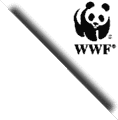 |
|
Networks
in the area
Therefore, a steady point in the WWF’s activities in the park areas
was the creation of networks in the area
which could bring together public and private
subjects to create synergies which could overcome the
conflicts and allow the creation of collaboration
and of new opportunities; in
this way, the economical resources can be used in the best manner
and the social, environmental and cultural patterns of the area
may be enhanced.
Therefore, the projects elaborated need a horizontal
collaboration, where similar subjects pursue common objectives
on a wide area and, at the same time, a vertical
collaboration. In the second case, different economical
stakeholders collaborate, in the same area, for the implementation
of common objectives, creating a network of public and private subjects
working together in the same area to identify, develop and implement
a project-idea. More generally, the collaboration
between subjects is guaranteed by the method
itself, for it is elaborated by the WWF and is based upon a wider
participation of subjects starting from the study stage
of the project. It is worthwhile stressing how the experimentation
of methods to encourage the attitude towards collaboration is crucial
to spread the experience in other areas in Southern Italy.
|
Gennargentu
N.P.:
milking sheel
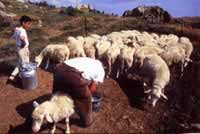
|
|
Therefore,
the working method developed by the WWF during the last few years
in the protected areas foresees that the initiatives and projects
identified must not only be compatible
with the environment, but they must also be based on
the enhancement of natural and cultural
resources of the area, including the local material culture;
therefore, they must be based essentially on the mobilization
and use of social
energies within the communities. In many cases, the schools
have represented a fundamental starting point to enter the societies
and let people know the objectives of the projects proposed by the
WWF. For example, the CADISPA project involved school children,
their families and their teachers in the activities aimed at re-discovering
and enhancing their area. This first stage allowed to mobilize the
local population on the subjects of sustainable development and
meet representatives of cooperatives, of public authorities and
of associations who are the main stakeholders
in local development. Moreover, the analysis of the area
was carried out with them and starting from the needs of the area,
coming out in that stage of the analysis, a set of representative
pilot-experiences were designed and implemented.
|
Cilento N.P.:
olive picking
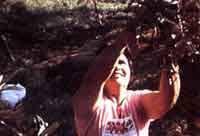
|
|
The
participatory method elaborated by the WWF foresees:
-
Activity planning;
-
Design of a public awareness/ animation stage;
-
Identification of local resources to be involved;
-
Identification of projects or programs;
-
Development of competencies of the local development stakeholders;
-
Implementation of pilot-projects.
The
success of the interventions so far implemented by the WWF in the
park areas is due to:
-
The experience acquired during the years in particularly difficult
Italian areas;
-
The elaboration of a participatory method now consolidated;
-
The presence in the area of WWF’s development animators with
an adequate training;
-
The collaboration with technical partners with high quality
capabilities;
-
The presence in Italian, European and world-wide networks allowing
the exchange of experiences and collaborations;
-
The capacity building activity foresees on-the-job training,
the constant presence of tutors, the exchange of experiences.
|
Gennargentu
N.P.:
cheese making
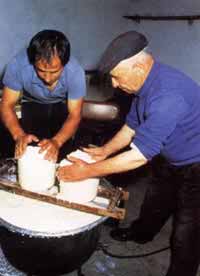
|
|
Activities
In the last few years, the WWF-Italy created various important experiences
of sustainable development in the protected areas:
-
CADISPA (Conservation and Development in Sparsely Populated
Areas) Program;
-
Project Master for Innovative Environmental Entrepreneurship
and Management implemented by the WWF in 1996 in collaboration
with the "young entrepreneurship
society";
-
EU initiative ADAPT:
Protected Areas: the environment, from restriction to development
opportunity;
-
Program Leonardo:
New competencies for the development of sustainable tourism
in the park areas;
-
Project PASS (Public Administration
for Southern Italy Development);
-
Wild School training for the management of protected areas outside
the Europe;
-
Sustainable development initiatives linked to WWF Italy protected
areas.
|
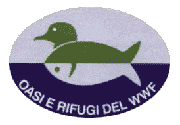 |
| The
WWF's strategy (1 of 2) |
   |
|
|




